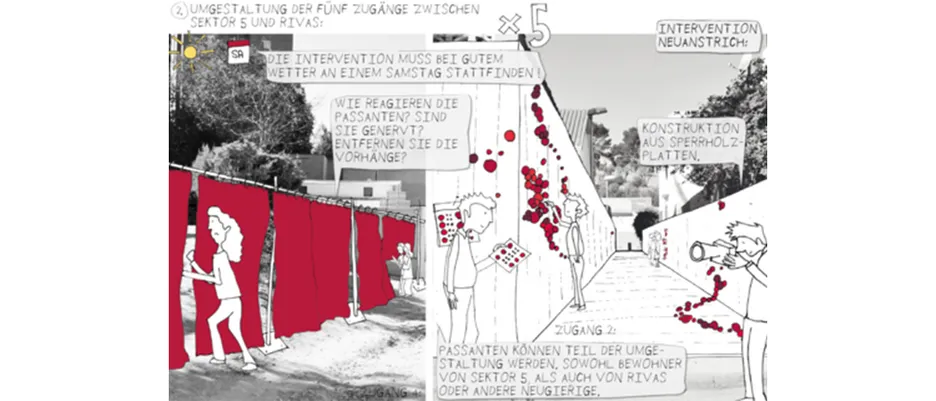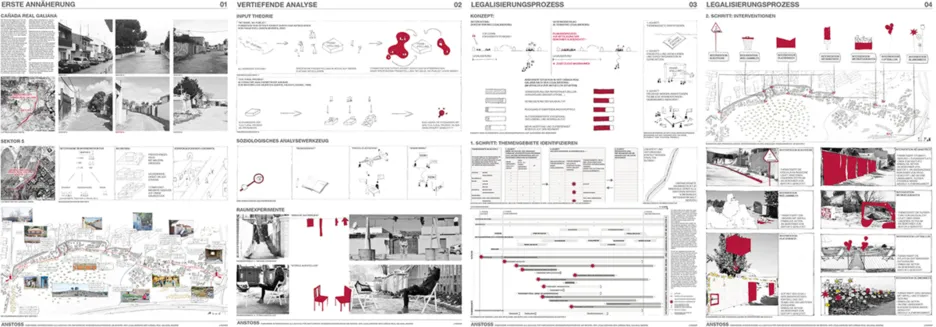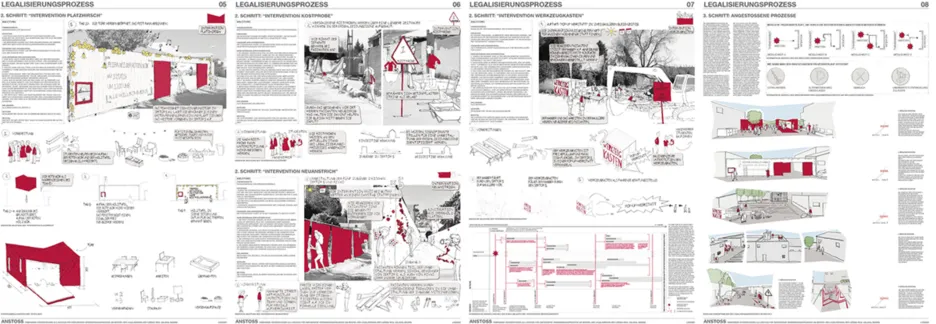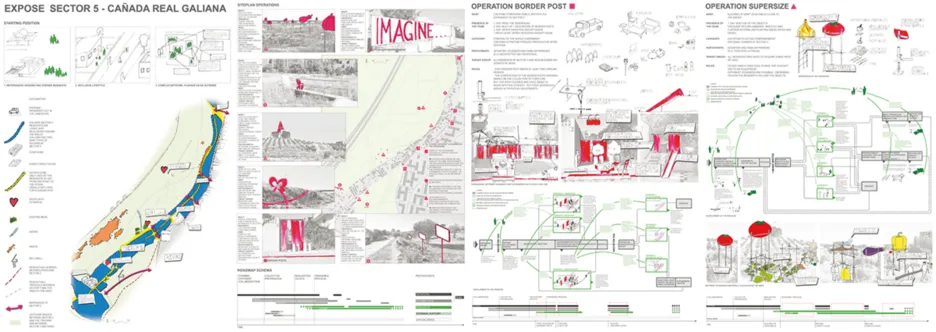Cañada Real Galiana
La ciudad lineal
Semester Project M.A. Landscape Architecture, Winter Semester 2015/16
Topic
The Cañada Real is presented in the media as the largest slum in Europe and a dangerous "no-go area". For more than 8,000 people, however, the Cañada is an everyday living environment and a lived reality. Beginning with the settlement of impoverished Spanish agricultural workers in the 1950s on the public land of the Castellan Cañada Real (Royal Cattle Drift), an informal settlement has formed along the length of 15 kilometers in the southeast of the Spanish capital. Roma and migrants from the African continent followed suit in search of an affordable place to stay. The effects of the global economic crisis of 2007, which left deep scars in Spain, are fueling the informal growth of the settlement: Spaniards from a wide variety of social and socioeconomic backgrounds are looking to it as a way out of the (debt) crisis. Curiously, the illegal and "unplanned" urban growth is happening in close proximity to the unfinished and largely abandoned satellite town of Ensanche de Vallecas - once a showcase project of formal urban expansion and real estate economics of the early 2000s. In 2013, according to the Madrid City Census, approximately 8,000 people live in the historic cultural landscape "worthy of protection." (Spain's Cañadas Reales are listed on UNESCO's index list.) Periodically, poorer residents in particular and their precarious chabolas (shacks) are threatened with forced eviction, while residents of more consolidated
Task
Process-oriented development concepts were sought for sector 5 of the informal settlement Cañada Real Galiana. The landscape architectural and urbanistic interventions and strategies were developed with the involvement of residents, local initiatives, actor networks and social fringe groups - with the aim of developing public spaces and essential infrastructure into urban catalysts in the Cañada and improving living conditions in the settlement.
The students went on an expedition from October 24 to 31, 2015
Supervision
Prof. Regine Keller, M. Sc. Johann-Christian Hannemann, Dipl. Ing. Felix Lüdicke, Dr. Mark Kammerbauer (Transarchitecture), Prof. Dr. Ignacio Farias & Dr. Tomás S. Criado (MCTS, TUM: Soziologische Recherche und Partizipationsverfahren)







